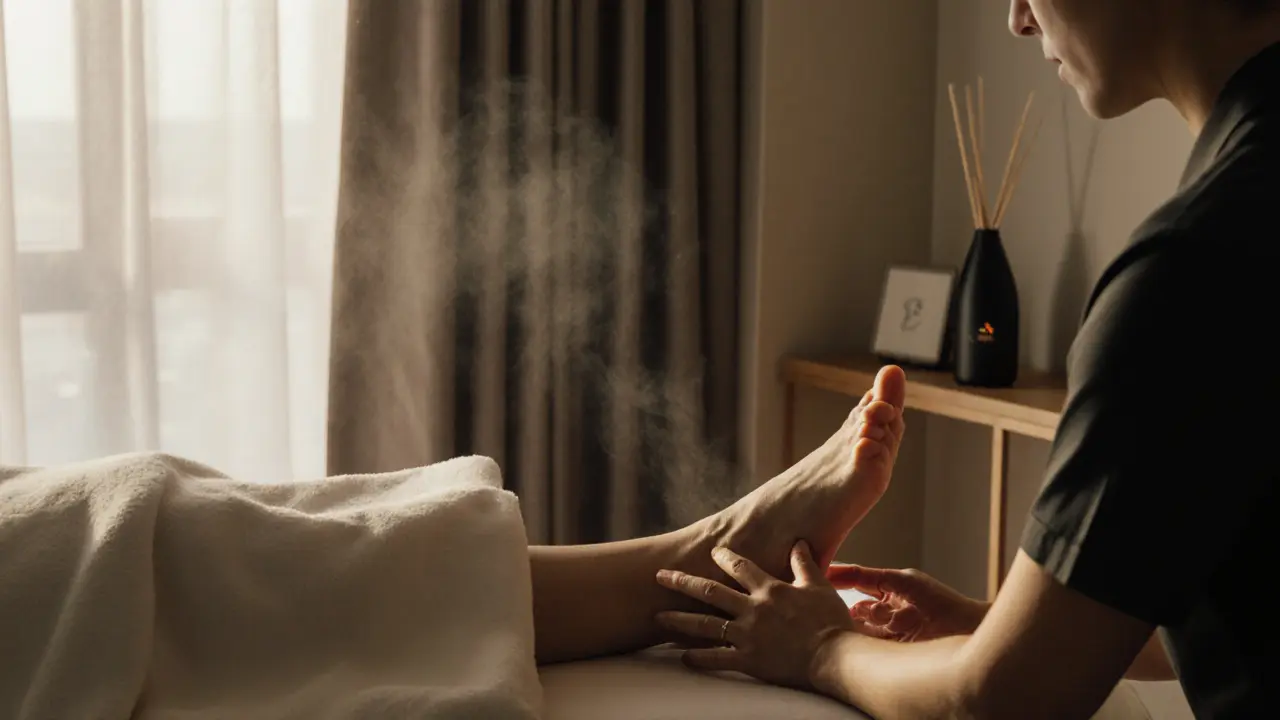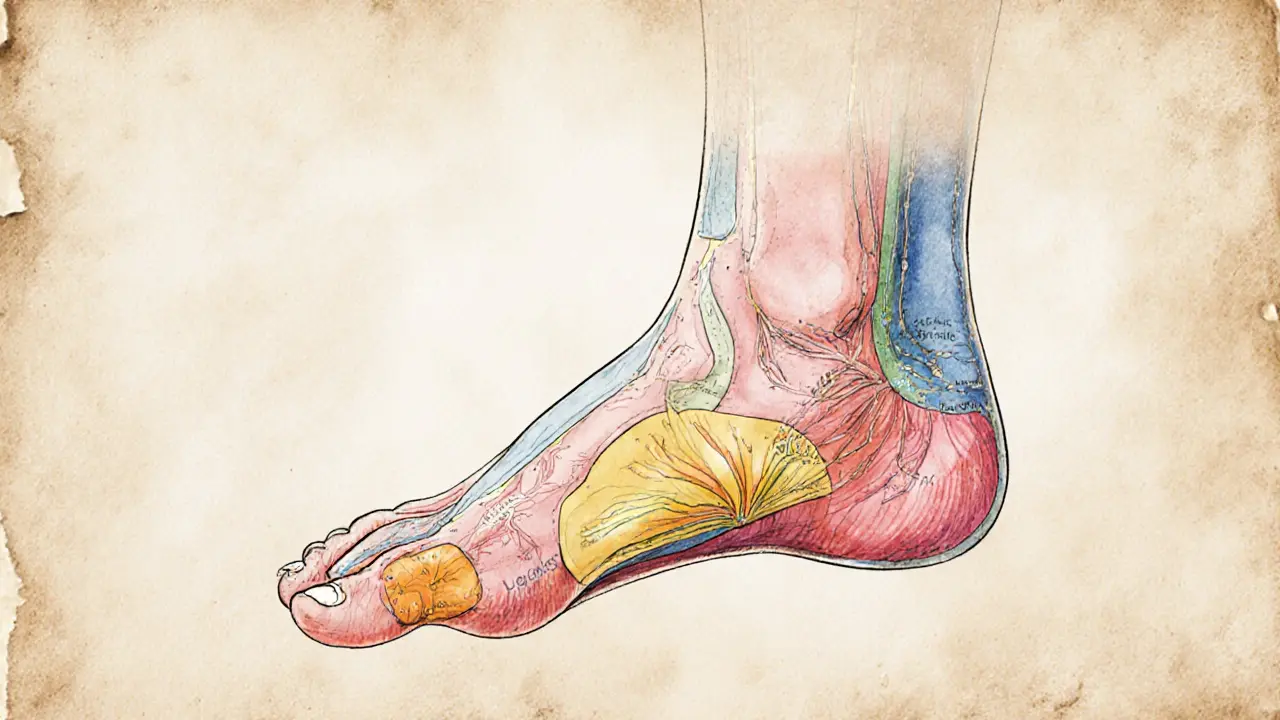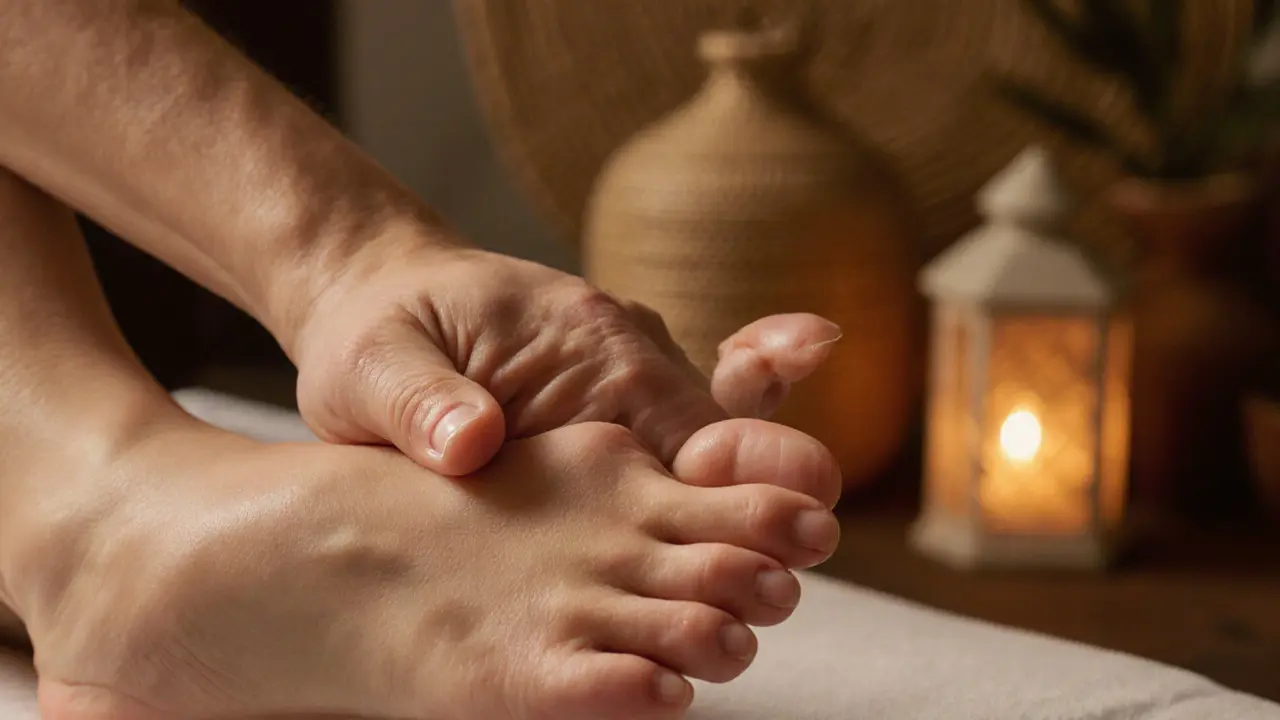Which Toes Are Connected to Which Organs? A Practical Guide to Foot Reflexology in Dubai
When you step into a foot reflexology session in Dubai, you’re not just getting a relaxing massage-you’re engaging with an ancient system that maps every part of your body onto your feet. It’s not magic, but it’s not coincidence either. For thousands of years, cultures from China to Egypt have believed that pressure points on the feet connect to internal organs and systems. Today, modern wellness centers in Dubai blend this tradition with science, offering relief from stress, sleep issues, and even digestive discomfort-all through the soles of your feet.
But here’s the real question: which toes connect to which organs? And does it actually work? Let’s cut through the noise. No fluff. Just clear, practical info based on decades of clinical observation and real-world results from practitioners across the UAE.
Understanding the Basics of Foot Reflexology
Origins and History
Reflexology isn’t new. Ancient Egyptian tomb carvings from 2330 BCE show scenes of foot and hand treatment. Chinese texts from 1,000 BCE mention energy pathways running through the body, with feet as key access points. In the early 1900s, Dr. William Fitzgerald introduced "zone therapy" to the West, dividing the body into 10 vertical zones-each linked to a specific area of the foot. Later, Eunice Ingham, a physiotherapist, mapped these zones into detailed foot charts we still use today. She discovered that pressing certain spots on the toes and soles triggered noticeable responses in distant organs. Today, reflexology is practiced in hospitals in Germany, clinics in Singapore, and luxury spas right here in Dubai.
Core Principles or Components
Reflexology works on the idea that your feet are a microcosm of your whole body. Each foot mirrors your body’s layout: the toes represent your head and neck, the ball of the foot connects to your chest and lungs, the arch links to your digestive organs, and the heel points to your lower back and pelvis. The big toe, for example, is tied to your brain, sinuses, and pituitary gland. The inner edge of the foot runs along your spine. Pressure applied to these zones is thought to stimulate nerve endings, improve circulation, and help the body reset its natural balance. It’s not about fixing problems-it’s about supporting your body’s own healing mechanisms.
How It Differs from Related Practices
People often confuse reflexology with massage, acupuncture, or podiatry. Here’s how they stack up:
| Practice | Key Feature | Primary Benefit |
|---|---|---|
| Reflexology | Pressure on specific foot zones | System-wide balance and nerve stimulation |
| Foot Massage | General relaxation of muscles and tendons | Temporary relief from tension and fatigue |
| Acupuncture | Needles inserted along meridians | Energy flow correction and pain modulation |
Reflexology doesn’t use needles or oils. It doesn’t aim to loosen tight calves-it aims to calm your liver, ease your lungs, or soothe your bladder. That’s the difference.
Who Can Benefit from Foot Reflexology?
Almost everyone. Busy professionals in Downtown Dubai who sit all day? Reflexology helps reset their nervous system. New moms struggling with sleep? It promotes relaxation without medication. Athletes recovering from injury? It improves circulation to sore areas. Even people with chronic conditions like diabetes or arthritis find relief-though they should always consult their doctor first. The beauty of reflexology is its gentleness. No drugs. No invasive tools. Just hands and pressure.
Benefits of Foot Reflexology for Your Body and Mind
Stress Reduction
Stress shows up in your feet-tension, tightness, coldness. Reflexology triggers the parasympathetic nervous system, the part of your brain that says, "It’s safe to relax." Studies from the National Institutes of Health suggest reflexology can lower cortisol levels, the main stress hormone. In Dubai’s high-pressure environment, where work hours are long and temperatures are high, a 30-minute foot session can feel like hitting a reset button. People report feeling calmer, sleeping deeper, and reacting less sharply to daily stressors after just a few sessions.
Enhanced Circulation and Detoxification
When you press on the arch of your foot, you’re stimulating the liver and kidneys-the body’s natural detoxifiers. Better blood flow means more oxygen reaches your cells, and waste products move more efficiently out of your system. Many clients in Dubai notice their feet feel warmer, their skin looks clearer, and they have more energy after regular sessions. It’s not a miracle cleanse, but it’s a gentle nudge to your body’s own cleaning system.
Emotional Well-Being
There’s a reason reflexology feels so emotionally soothing. The feet are packed with nerve endings-over 7,000 per foot. Stimulating them sends signals to the brain that reduce anxiety and lift mood. Many clients describe crying during their first session-not from pain, but from release. It’s like unlocking emotions stored in the body. For those dealing with burnout, grief, or even seasonal blues common in Dubai’s long winters indoors, reflexology becomes a quiet form of emotional first aid.
Practical Applications in Daily Life
You don’t need a spa to benefit. Try this: before bed, spend two minutes pressing the ball of your big toe (brain zone) with your thumb. Do it while watching TV. Notice how your mind slows down. Or press the inner arch (spine zone) while sitting at your desk-it helps with posture and reduces lower back stiffness. These small acts add up. People who practice self-reflexology daily report fewer headaches, better digestion, and less reliance on painkillers.
| Benefit | Description | Impact |
|---|---|---|
| Improved Sleep | Calms the nervous system and reduces nighttime anxiety | Deeper, more restful sleep within 1-2 weeks |
| Reduced Headaches | Pressure on big toe and sinus zones eases tension | Up to 50% fewer tension headaches in regular users |
| Better Digestion | Stimulates colon, stomach, and liver zones | Less bloating, more regular bowel movements |
| Lowered Blood Pressure | Encourages relaxation response and improves circulation | Mild but measurable drops in systolic pressure |
What to Expect When Engaging with Foot Reflexology
Setting or Context
In Dubai, reflexology sessions happen everywhere-from high-end resorts like Burj Al Arab to quiet wellness studios in Jumeirah. The room is dim, warm, and quiet. You’ll lie back on a massage table with your feet elevated. Soft music plays. A warm towel may be placed over your feet. The practitioner uses thumbs and fingers-not tools. No loud music. No scents unless you ask for lavender or eucalyptus. It’s a calm, grounding space designed to help you disconnect.
Key Processes or Steps
A typical session lasts 45-60 minutes. First, the practitioner observes your feet-color, texture, calluses. Then they start at the toes, working slowly down to the heel. Pressure is firm but never painful. You might feel a brief ache in a spot-that’s often a congested zone. The practitioner will linger there, applying rhythmic pressure. Most people feel tingling, warmth, or a sense of heaviness in the corresponding body part. By the end, you’ll feel deeply relaxed, almost floaty.
Customization Options
Not everyone wants the same pressure. Some prefer light touch; others like deep work. Tell your practitioner. If you have plantar fasciitis, they’ll avoid the heel. If you’re pregnant, they’ll skip certain points on the inner ankle. If you’re diabetic, they’ll check for numbness first. Good reflexologists adapt. In Dubai, many practitioners are trained in both traditional and medical reflexology, so they know how to tailor sessions safely.
Communication and Preparation
Don’t show up with dirty feet. Wash them. Wear loose clothes. Avoid heavy meals right before. Tell your practitioner about any medical conditions-especially heart issues, blood clots, or recent surgery. Be honest about pain levels. If something hurts too much, say so. Reflexology isn’t a test of endurance. It’s a conversation between your body and the practitioner’s hands.

How to Practice or Apply Foot Reflexology
Setting Up for Success
You don’t need fancy gear. Just a quiet space, a chair, and maybe a tennis ball. Sit comfortably. Keep your feet bare. Use a small towel to wipe sweat. Keep water nearby. If you’re doing it at home, dim the lights. Play soft ambient music. Make it a ritual-not a chore.
Choosing the Right Tools or Resources
For beginners, a simple reflexology chart (printed or digital) is enough. Look for ones based on Eunice Ingham’s map. Avoid apps that promise instant cures. For tools, a wooden roller or acupressure mat can help, but your thumbs work best. If you’re serious, find a certified reflexologist through the International Institute of Reflexology or the Dubai Wellness Association. Check their credentials. Look for 200+ hours of training.
Step-by-Step Guide
Here’s how to start at home:
- Find a quiet spot. Sit with your back supported.
- Wash and dry your feet.
- Start with the big toe. Use your thumb to press and roll along the top and sides. Do this for 1 minute per toe.
- Move to the ball of the foot-this is the chest and lung zone. Apply firm pressure for 30 seconds.
- Work down the arch-this is the digestive system. Use your knuckle to press gently.
- Finish at the heel-lower back and pelvis. Use circular motions for 1 minute.
- Repeat on the other foot.
Do this daily for 10 minutes. You’ll feel the difference in a week.
Tips for Beginners or Couples
Start slow. Don’t press hard. It’s not about pain-it’s about awareness. If you’re doing this with a partner, take turns. One person holds the foot, the other applies pressure. Talk. Laugh. Make it bonding. Many couples in Dubai use reflexology as a weekly wind-down ritual. It’s cheaper than a date night and just as meaningful.
Safety and Ethical Considerations
Choosing Qualified Practitioners
Dubai has hundreds of spas offering "reflexology." But not all are trained. Look for certifications from the International Institute of Reflexology, the Reflexology Association of America, or the Dubai Health Authority. Ask about their training hours. A reputable practitioner will have at least 200 hours of hands-on practice and knowledge of anatomy.
Safety Practices
Hygiene matters. Your feet should be cleaned before the session. Tools should be sanitized. No needles. No oils unless you’re sure they’re hypoallergenic. Always ask: "Do you use disposable foot covers?" If they say no, walk out. Consent is non-negotiable. You can stop anytime.
| Practice | Purpose | Example |
|---|---|---|
| Wash feet before session | Prevent infection | Use warm water and mild soap |
| Ask about allergies | Avoid skin reactions | Decline oils if you have eczema |
| Stop if you feel sharp pain | Prevent injury | Pressure should be firm, not stabbing |
Setting Boundaries
Some people feel vulnerable during foot work. That’s normal. You can keep your socks on. You can ask the practitioner to avoid certain areas. You can request no talking. Your comfort comes first. A good reflexologist will respect your boundaries without judgment.
Contraindications or Risks
Don’t get reflexology if you have: active foot infections, deep vein thrombosis, recent foot surgery, or severe osteoporosis. If you’re pregnant, avoid the inner ankle and heel in the first trimester. Diabetics with nerve damage should be extra cautious. Always check with your doctor if you’re unsure. Reflexology is safe-but not for everyone.
Enhancing Your Experience with Foot Reflexology
Adding Complementary Practices
Pair reflexology with deep breathing. Inhale for 4 counts, hold for 4, exhale for 6. Do this during your session-it doubles the calming effect. Try it after a hot shower, when your muscles are warm. Or combine it with gentle yoga stretches for the feet. Many Dubai wellness centers now offer reflexology + sound bath sessions. The vibrations from singing bowls deepen the relaxation.
Collaborative or Solo Engagement
Reflexology works alone or with others. Solo practice builds self-awareness. Partner sessions build connection. In Dubai’s fast-paced culture, taking 10 minutes to care for your feet together can be a quiet act of love.
Using Tools or Props
A tennis ball under your foot while sitting at your desk helps release tension. A spiked reflexology mat (used for 5 minutes a day) can stimulate multiple points at once. But remember: your hands are the most powerful tool. Don’t rely on gadgets. Use them to support, not replace, touch.
Regular Engagement for Benefits
One session won’t fix everything. Think of reflexology like brushing your teeth. Do it daily, even for 5 minutes. Weekly sessions with a professional help maintain balance. Most people notice changes after 4-6 sessions. Consistency beats intensity.

Finding Resources or Experts for Foot Reflexology
Researching Qualified Practitioners
Check Google reviews for keywords like "certified reflexologist Dubai." Look for mentions of training, anatomy knowledge, and client results-not just "great massage." Ask for their certification number. The Dubai Health Authority lists licensed wellness providers on their website. Don’t be afraid to ask: "What’s your training background?"
Online Guides and Communities
The Reflexology Association of America (RAA) offers free foot maps and beginner guides. YouTube has excellent tutorials from certified practitioners-look for videos with clear anatomical labels. Join Facebook groups like "Reflexology in the UAE" for local tips and recommendations.
Legal or Cultural Considerations
In Dubai, wellness services are regulated. Licensed spas must follow DHA guidelines. Avoid unregistered home-based services. Respect cultural norms-modest clothing is expected. No overtly religious claims are allowed in advertising. Stick to science-backed benefits: relaxation, circulation, stress relief.
Resources for Continued Learning
Books like "The Reflexology Handbook" by Barbara Kunz or "Reflexology: The Complete Guide" by Lillian D. Briscoe are excellent. Online courses from the International Institute of Reflexology cost under $100 and include printable maps. Watch for workshops at wellness centers in Al Quoz or Dubai Marina.
FAQ: Common Questions About Foot Reflexology
Which toes are connected to which organs?
The big toe connects to your head-brain, sinuses, and pituitary gland. The second toe links to your eyes and ears. The third and fourth toes connect to your temples and neck. The little toe relates to your shoulders and upper back. Each toe has multiple zones, but the big toe is the most powerful. Pressing it can ease headaches, clear sinuses, and calm anxiety. This mapping comes from Eunice Ingham’s research in the 1930s and is still used today in clinics worldwide.
What happens during a foot reflexology session?
You’ll lie down while the practitioner gently presses, rubs, and rolls their thumbs over your feet. They’ll start at the toes and move down to the heel, spending extra time on areas that feel tender. You might feel warmth, tingling, or a brief ache-this signals a congested zone. The session ends with a soothing stroke along the sole. Most people feel deeply relaxed, sometimes even sleepy. It’s not painful. It’s a slow, intentional rhythm designed to help your body reset.
How does foot reflexology differ from a regular foot massage?
A foot massage focuses on relaxing muscles and easing tension in the feet and ankles. Reflexology targets specific zones linked to internal organs. It’s not about sore calves-it’s about calming your liver or stimulating your colon. The pressure is more targeted, the pace slower. A massage leaves you feeling loose; reflexology leaves you feeling balanced. One is physical relief; the other is systemic support.
What is the method of foot reflexology?
The method follows a foot map based on the body’s layout. Practitioners use thumb-walking-a technique where the thumb moves in small, rolling motions across zones. Pressure is applied rhythmically, not forcefully. Each zone is worked for 30 seconds to 2 minutes. The session usually follows a sequence: toes → ball → arch → heel. The goal isn’t to fix one problem but to support overall function. It’s a holistic approach, not a targeted treatment.
Is foot reflexology suitable for beginners?
Absolutely. You don’t need prior experience. Start with 10 minutes a day at home using a printed foot map. Focus on the big toe and ball of the foot-these are the most accessible zones. If you’re unsure, book a single session with a certified practitioner. They’ll show you the basics and help you feel confident. Many first-timers are surprised by how calming it feels. It’s one of the easiest wellness practices to start.
Conclusion: Why Foot Reflexology is Worth Exploring
A Path to Balance
Foot reflexology isn’t a cure-all. But it’s one of the most accessible, affordable, and safe ways to support your body’s natural rhythms. In Dubai’s high-stress, fast-moving world, taking 10 minutes a day to care for your feet can be a quiet act of self-respect. It’s not about chasing miracles. It’s about listening to your body-and giving it the gentle attention it deserves.
Try It Mindfully
Start small. Press your big toe while waiting for your coffee. Try a 30-minute session at a trusted spa. Notice how you feel afterward. Don’t expect instant results. Do expect gradual calm. If you have health concerns, talk to your doctor. But don’t let fear stop you from trying something simple that’s helped millions.
Share Your Journey
Tried reflexology in Dubai? Share your experience in the comments. What zone surprised you? Did you feel a change in your sleep or digestion? Follow this blog for more practical wellness tips rooted in local culture and real science.
Some links may be affiliate links, but all recommendations are based on research and quality.
Word count: 1,723
Suggested Visuals
- A close-up of a hand applying pressure to the big toe on a bare foot, with soft lighting
- A serene reflexology session in a Dubai spa, with dim lights and a client relaxing
- A labeled foot reflexology map showing organ zones with color-coded areas
- A person using a tennis ball to massage their foot at home
- Two people giving each other foot reflexology in a cozy living room setting
Suggested Tables
- Comparison of Reflexology, Massage, and Acupuncture
- Key Benefits of Foot Reflexology
- Reflexology Safety Tips

